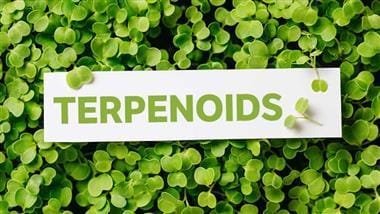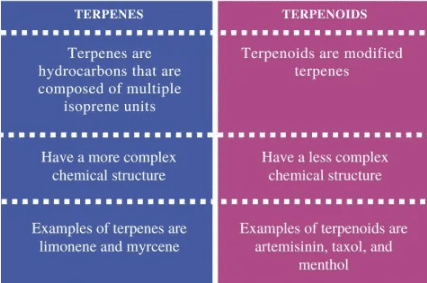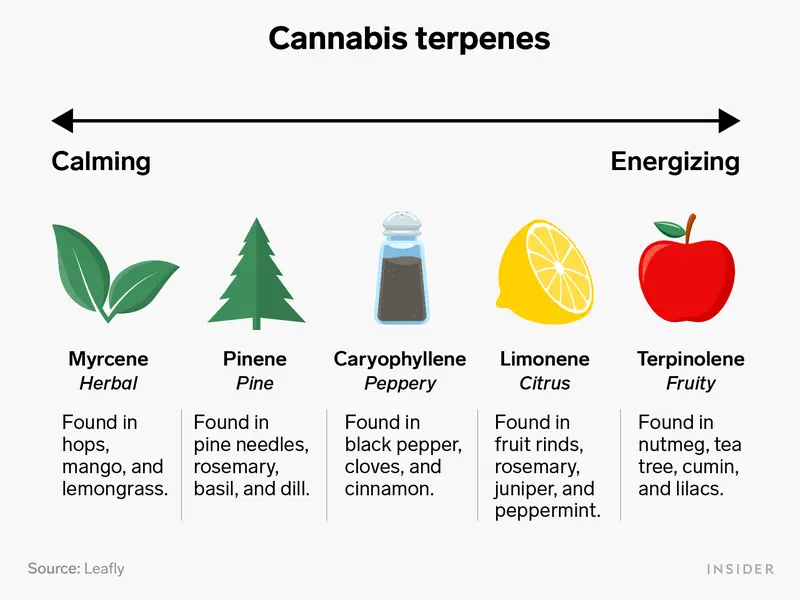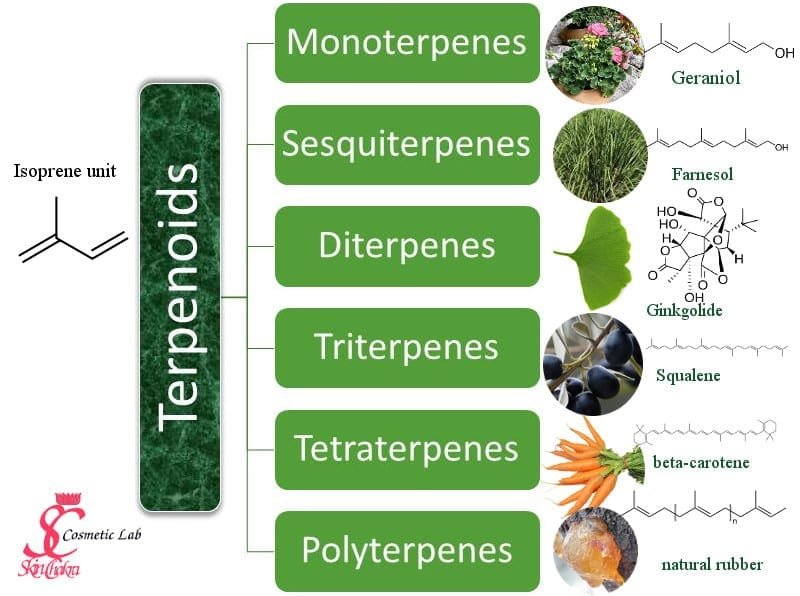Terpenes and terpenoids are two distinct compounds found in almost all plants, including cannabis, yet they are often referred to interchangeably. Understanding the difference between terpenes and terpenoids is crucial for producers and consumers. Whether it’s aromatherapy, medical cannabis, essential oils, or natural health products, these compounds are used to create therapeutic effects, but their chemical structures and properties differ significantly.
To help you understand the terpenoid vs terpene distinction, this comprehensive guide will explore both compounds’ fundamental differences, applications, and importance.
Sections
ToggleWhat Are Terpenes?

Terpenes are natural hydrocarbon compounds found in the essential oils of many plants, particularly conifers and citrus fruits. They are volatile organic compounds made entirely of carbon and hydrogen atoms. Terpenes are critical to the cannabis and food processing industry as they add distinctive aromas and flavors we associate with various plants.
In nature, the role of terpenes is multifarious, involving attracting pollinators, repelling herbivores, and protecting plants from environmental stresses.
What Are Terpenoids?

Terpenoids, or isoprenoids, are modified terpenes with an additional functional group such as oxygen, nitrogen, or sulfur atoms. These compounds are formed when terpenes undergo oxidation, rearrangement, or other chemical modifications. Terpenoids can be produced artificially through processing methods like drying, curing, or extraction.
Terpenoids are generally more stable and less volatile than terpenes. Due to the presence of heteroatoms, their therapeutic properties, solubility, and biological activity are significantly different.
Terpenes vs Terpenoids

Feature | Terpenes | Terpenoids |
Chemical Structure | Pure hydrocarbons (Carbon and Hydrogen atoms only) | Modified hydrocarbons with oxygen, nitrogen, or sulfur |
Formation | Naturally synthesized in plant tissues during the lifetime | Formed through oxidation or chemical modification or can be artificially produced |
Volatility | Highly volatile, evaporate easily | Less volatile, more stable |
Uses | Aromatherapy, fragrances, flavoring, adding taste to edibles | Pharmaceuticals, topical treatments, preservatives |
Why the Distinction Matters
Terpenoid vs terpene distinction matters because the final effects as well as applications are varied:
1. Medical Cannabis
With accurate identification, you get reliability of expected therapeutic effects and potential drug interactions. Terpenes offer enhanced cannabinoid absorption, while terpenoids provide additional medicinal benefits through different mechanisms.
2. Aromatherapy
The difference between terpenes and terpenoids is more evident in aromatherapy, as the therapeutic duration varies due to their distinct volatility. Terpenes provide immediate aromatic effects, while terpenoids take longer to show effects, but the benefits are longer-lasting.
3. Pharmaceuticals
In drug development, precise chemical identification is mandatory. As terpenes and terpenoids have different pharmacokinetic properties and bioavailability, their distinction is essential for optimal dosing and effects.
4. Label Accuracy
Terpenes and terpenoids must be clearly identified and mentioned on product labels to ensure proper expectations regarding potency, duration of effects, and potential therapeutic benefits.
Common Terpenes and Their Benefits

Here are some of the most commonly available terpenes and their benefits:
1. Myrcene
The most common terpene found in hops, lemongrass, and cannabis, myrcene, has excellent sedating and muscle-relaxing properties. It also enhances the absorption of other compounds, making it appropriate for most cannabis products.
2. Limonene
Limonene is a terpene commonly occurring in citrus plants. It offers mood-enhancing and stress-relieving benefits, and has antimicrobial properties. It can support immune system functions and may help with anxiety and depression.
3. Linalool
Common in lavender and many flowers, linalool provides calming and anti-anxiety effects. This terpene is widely used in aromatherapy products, offering stress relief, anti-inflammatory, and pain-relieving properties.
4. Pinene
Pinene is found in pine needles, rosemary, and basil. It has bronchodilator effects that can counteract THC’s memory-impairing effects, improving alertness and memory retention.
5. Beta-Caryophyllene
Present in black pepper, cloves, and cannabis, this terpene can bind to CB2 receptors. Due to its anti-inflammatory and pain-relieving benefits, beta-caryophyllene is often used in pain-relieving products.
Click Here to Know More About List of Terpenes and Their Effects: Benefits, Types, and Uses in Cannabis
Common Terpenoids and Their Uses

1. Menthol
Menthol is the most widely recognized terpenoid used in pharmaceuticals and cosmetics. It is derived from peppermint and other mint plants, offering cooling sensations. It has analgesic properties and helps with respiratory issues and muscle pain.
2. Camphor
Found in camphor trees and processed from turpentine, camphor has antimicrobial and anti-inflammatory properties. This terpenoid is commonly used in chest rubs and pain-relief balms.
3. Thymol
Thymol is extracted from thyme and oregano. It is widely used in mouthwashes, antiseptics, and natural preservatives, possessing potent antimicrobial and antifungal properties.
4. Curcumin
Turmeric’s active compound, curcumin, is a powerful anti-inflammatory and antioxidant terpenoid. An extensively studied terpenoid, it is clinically proven to treat various inflammatory conditions and support overall health potentially.
Conclusion
The difference between terpenes and terpenoids is not just chemical structure, but the fundamental distinction in their therapeutic efficacy, product stability, and consumer experience.
Terpenes are volatile compounds that offer immediate aromatic impact, while terpenoids are less aggressive, offering more stable, long-lasting therapeutic effects through their modified chemical structures. Whether you are exploring cannabis products or looking for alternative medications, understanding the distinction between terpenoids and terpenes will help you make informed choices about products.




